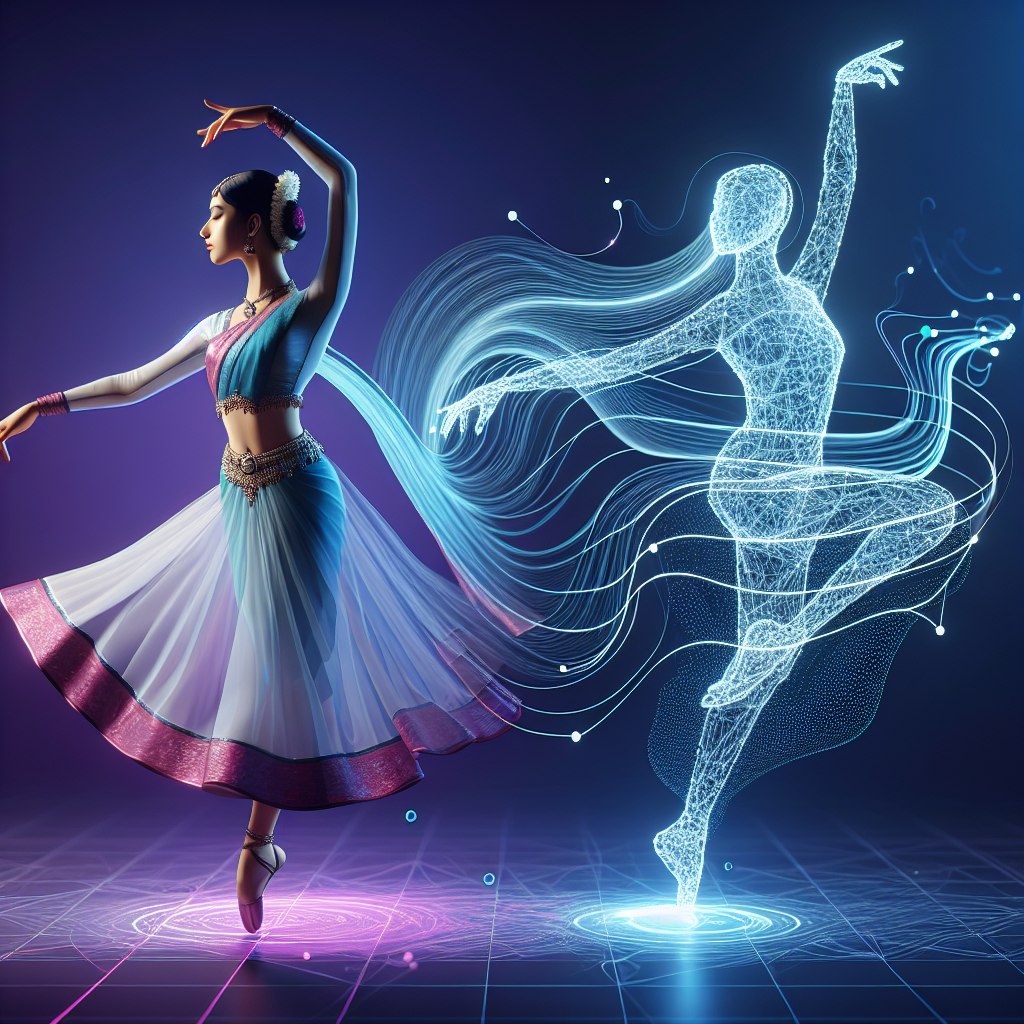AI in Dance: Enhancing Choreography and Performance with Artificial Intelligence
Dance is an art form that has been around for centuries, captivating audiences with its beauty, grace, and emotion. Over the years, dancers and choreographers have pushed the boundaries of what is possible, constantly striving to create new and innovative movements and performances. With the advent of artificial intelligence (AI), the world of dance is entering a new era, where technology is being used to enhance choreography and performance in ways that were once thought impossible.
AI is a rapidly evolving field that is being used in a wide range of industries, from healthcare to finance to entertainment. In the world of dance, AI is being used to analyze movement patterns, create new choreography, and even enhance the performance of dancers. By harnessing the power of AI, choreographers and dancers can explore new creative possibilities, push the boundaries of what is possible, and create performances that are truly unique and groundbreaking.
One of the ways that AI is being used in dance is through motion capture technology. Motion capture technology uses sensors and cameras to track the movements of dancers in real-time, allowing choreographers to analyze and study their movements in incredible detail. By using AI algorithms to analyze this data, choreographers can gain insights into movement patterns, identify areas for improvement, and even create new choreography based on the data collected.
Another way that AI is being used in dance is through generative algorithms, which are designed to create new movements and choreography based on existing patterns and styles. By inputting a set of parameters, such as the desired style of dance or the mood of the performance, AI algorithms can generate new movements and choreography that are both innovative and unique. This allows choreographers to explore new creative possibilities, experiment with different styles, and push the boundaries of what is possible in dance.
AI is also being used to enhance the performance of dancers in real-time. By using sensors and cameras to track the movements of dancers on stage, AI algorithms can provide feedback and suggestions to help dancers improve their performance. For example, AI algorithms can analyze the alignment and posture of dancers, provide feedback on their technique, and even suggest ways to improve their movements. This real-time feedback can help dancers perform at their best, allowing them to focus on their artistry and creativity without worrying about technical details.
In addition to enhancing choreography and performance, AI is also being used to create interactive experiences for audiences. By using AI algorithms to analyze the movements of dancers in real-time, choreographers can create performances that respond to the movements and emotions of the audience. For example, AI algorithms can analyze the facial expressions of audience members, their body language, and even their applause to create a performance that is tailored to the mood and energy of the audience. This creates a truly immersive and interactive experience for audiences, allowing them to engage with the performance in new and exciting ways.
FAQs:
Q: How is AI being used in dance?
A: AI is being used in dance in a variety of ways, including motion capture technology, generative algorithms, and real-time performance enhancement. These technologies allow choreographers and dancers to analyze movement patterns, create new choreography, and even enhance the performance of dancers in real-time.
Q: How does motion capture technology work in dance?
A: Motion capture technology uses sensors and cameras to track the movements of dancers in real-time, allowing choreographers to analyze and study their movements in incredible detail. By using AI algorithms to analyze this data, choreographers can gain insights into movement patterns, identify areas for improvement, and even create new choreography based on the data collected.
Q: What are generative algorithms in dance?
A: Generative algorithms are designed to create new movements and choreography based on existing patterns and styles. By inputting a set of parameters, such as the desired style of dance or the mood of the performance, AI algorithms can generate new movements and choreography that are both innovative and unique.
Q: How does AI enhance the performance of dancers in real-time?
A: By using sensors and cameras to track the movements of dancers on stage, AI algorithms can provide feedback and suggestions to help dancers improve their performance. For example, AI algorithms can analyze the alignment and posture of dancers, provide feedback on their technique, and even suggest ways to improve their movements.
Q: How does AI create interactive experiences for audiences?
A: By using AI algorithms to analyze the movements of dancers in real-time, choreographers can create performances that respond to the movements and emotions of the audience. This creates a truly immersive and interactive experience for audiences, allowing them to engage with the performance in new and exciting ways.

